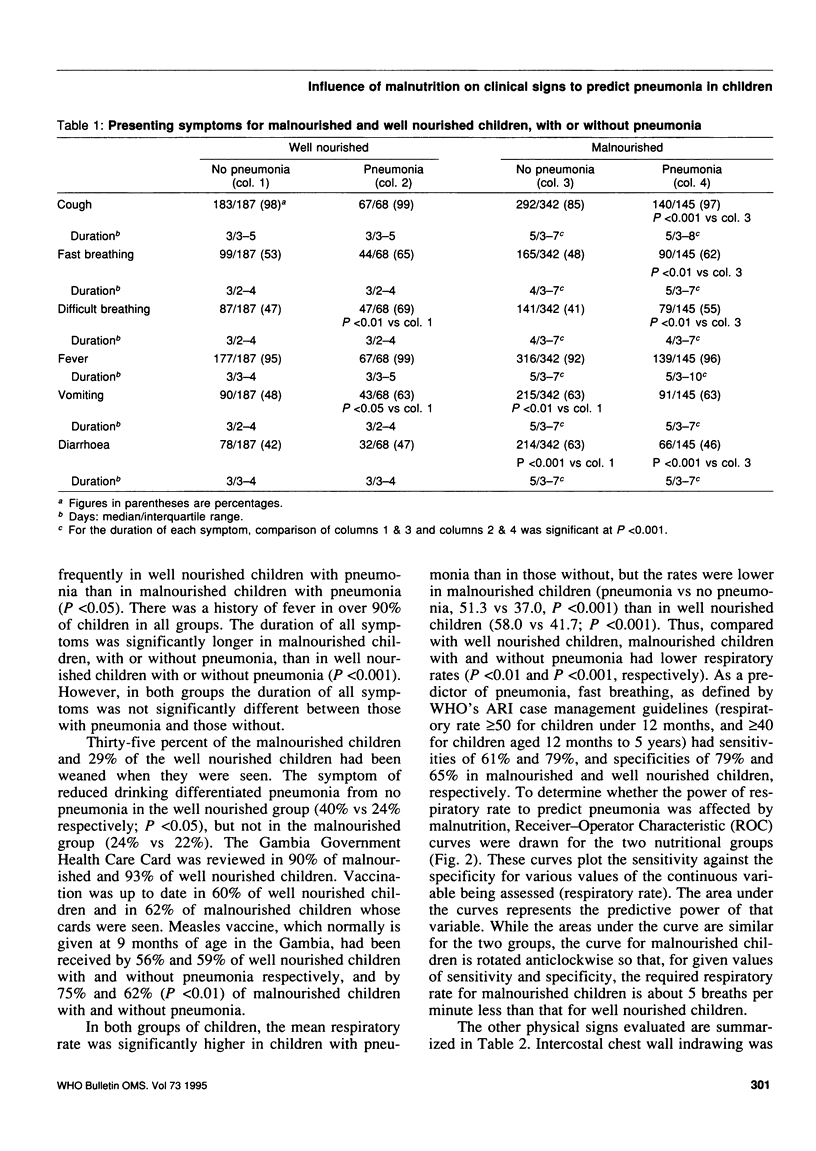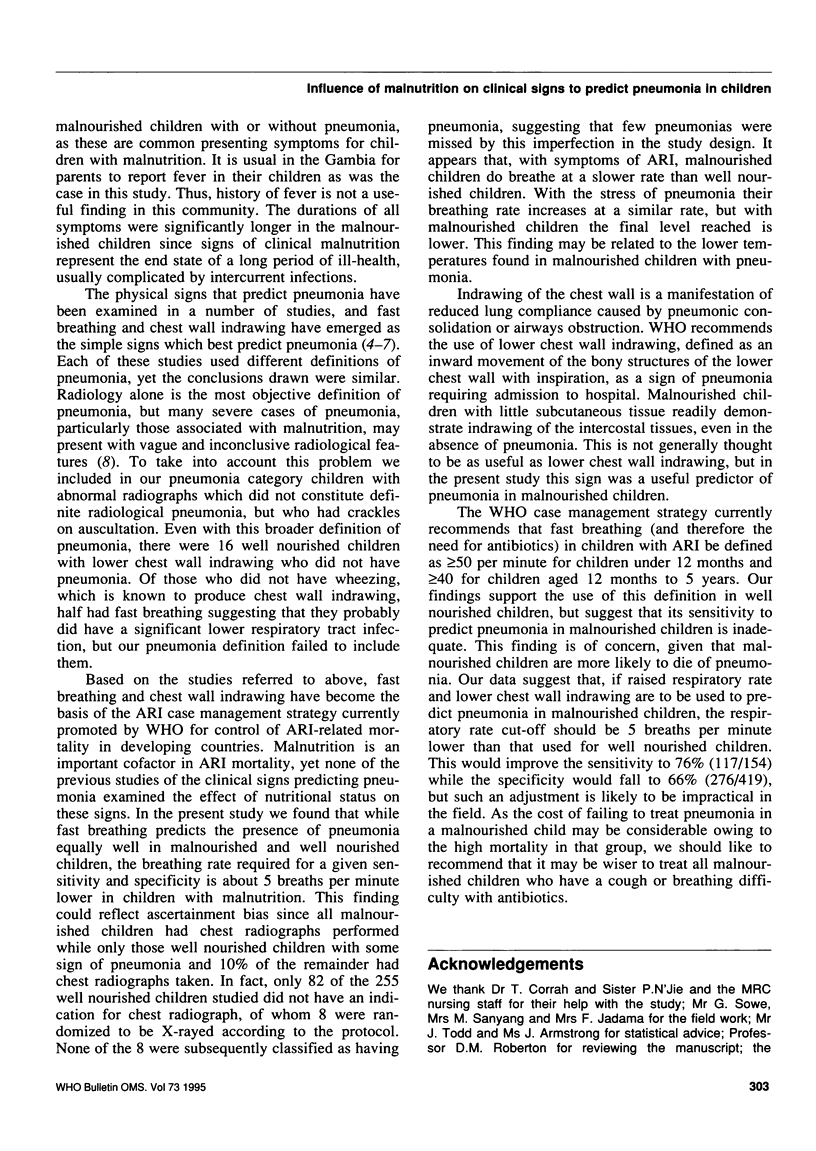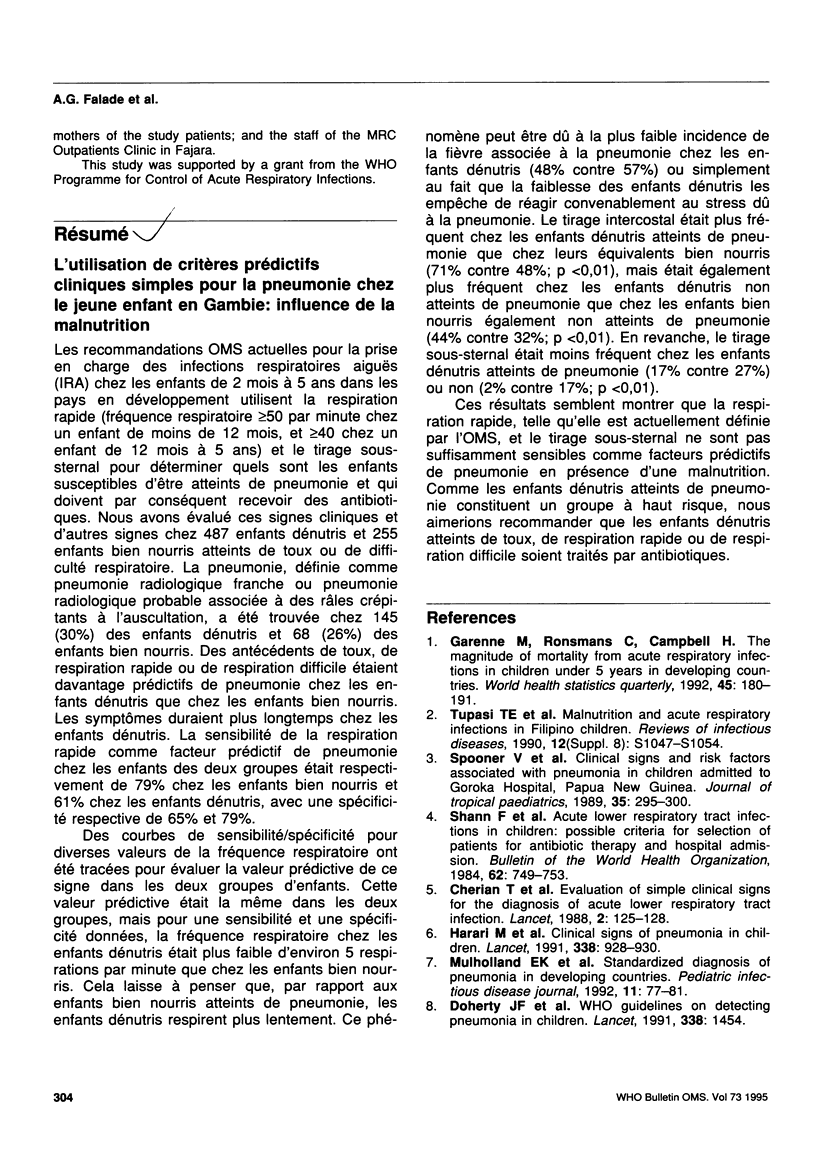Abstract
The current WHO recommendations for the case management of acute respiratory infections (ARI) in children aged 2 months to 5 years in developing countries use fast breathing (respiratory rate of > or = 50 per minute in children under 12 months and > or = 40 in children aged 12 months to 5 years) and lower chest wall indrawing to determine which child is likely to have pneumonia and should therefore receive antibiotics. We have evaluated these and other physical signs in 487 malnourished children and 255 well nourished children who presented with a cough or breathing difficulty. Pneumonia, defined as definite radiological pneumonia or probable radiological pneumonia associated with crackles on auscultation, was present in 145 (30%) of the malnourished children and 68 (26%) of the well nourished children. The respiratory rate predicted pneumonia equally well in the two groups, but to achieve an appropriate sensitivity and specificity the respiratory rate cut-off required in malnourished children was approximately 5 breaths per minute less than that in well nourished children. Intercostal indrawing was more common and lower chest wall indrawing was less common in the malnourished children, with or without pneumonia. These results suggest that fast breathing, as defined at present by WHO, and lower chest wall indrawing are not sufficiently sensistive as predictors of pneumonia in malnourished children. As the latter are a high-risk group, we should like to recommend that children with malnutrition who present with a cough, fast breathing or difficult breathing should be treated with antibiotics.
Full text
PDF





Selected References
These references are in PubMed. This may not be the complete list of references from this article.
- Cherian T., John T. J., Simoes E., Steinhoff M. C., John M. Evaluation of simple clinical signs for the diagnosis of acute lower respiratory tract infection. Lancet. 1988 Jul 16;2(8603):125–128. doi: 10.1016/s0140-6736(88)90683-6. [DOI] [PubMed] [Google Scholar]
- Garenne M., Ronsmans C., Campbell H. The magnitude of mortality from acute respiratory infections in children under 5 years in developing countries. World Health Stat Q. 1992;45(2-3):180–191. [PubMed] [Google Scholar]
- Harari M., Shann F., Spooner V., Meisner S., Carney M., de Campo J. Clinical signs of pneumonia in children. Lancet. 1991 Oct 12;338(8772):928–930. doi: 10.1016/0140-6736(91)91785-s. [DOI] [PubMed] [Google Scholar]
- Mulholland E. K., Simoes E. A., Costales M. O., McGrath E. J., Manalac E. M., Gove S. Standardized diagnosis of pneumonia in developing countries. Pediatr Infect Dis J. 1992 Feb;11(2):77–81. doi: 10.1097/00006454-199202000-00004. [DOI] [PubMed] [Google Scholar]
- Shann F., Hart K., Thomas D. Acute lower respiratory tract infections in children: possible criteria for selection of patients for antibiotic therapy and hospital admission. Bull World Health Organ. 1984;62(5):749–753. [PMC free article] [PubMed] [Google Scholar]
- Tupasi T. E., Mangubat N. V., Sunico M. E., Magdangal D. M., Navarro E. E., Leonor Z. A., Lupisan S., Medalla F., Lucero M. G. Malnutrition and acute respiratory tract infections in Filipino children. Rev Infect Dis. 1990 Nov-Dec;12 (Suppl 8):S1047–S1054. doi: 10.1093/clinids/12.supplement_8.s1047. [DOI] [PubMed] [Google Scholar]


